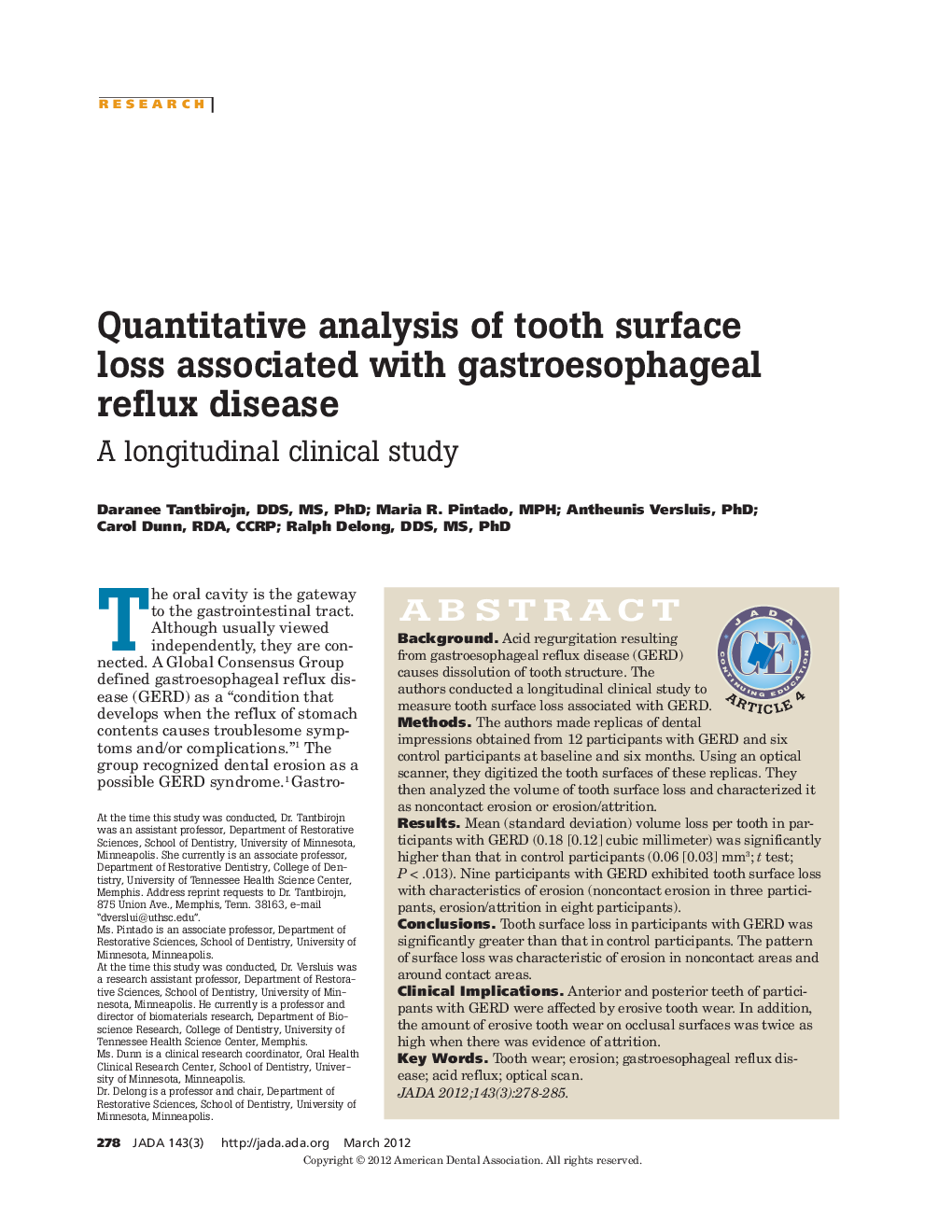| Article ID | Journal | Published Year | Pages | File Type |
|---|---|---|---|---|
| 3137884 | The Journal of the American Dental Association | 2012 | 8 Pages |
ABSTRACTBackgroundAcid regurgitation resulting from gastroesophageal reflux disease (GERD) causes dissolution of tooth structure. The authors conducted a longitudinal clinical study to measure tooth surface loss associated with GERD.MethodsThe authors made replicas of dental impressions obtained from 12 participants with GERD and six control participants at baseline and six months. Using an optical scanner, they digitized the tooth surfaces of these replicas. They then analyzed the volume of tooth surface loss and characterized it as noncontact erosion or erosion/attrition.ResultsMean (standard deviation) volume loss per tooth in participants with GERD (0.18 [0.12] cubic millimeter) was significantly higher than that in control participants (0.06 [0.03] mm3; t test; P < .013). Nine participants with GERD exhibited tooth surface loss with characteristics of erosion (noncontact erosion in three participants, erosion/attrition in eight participants).ConclusionsTooth surface loss in participants with GERD was significantly greater than that in control participants. The pattern of surface loss was characteristic of erosion in noncontact areas and around contact areas.Clinical ImplicationsAnterior and posterior teeth of participants with GERD were affected by erosive tooth wear. In addition, the amount of erosive tooth wear on occlusal surfaces was twice as high when there was evidence of attrition.
